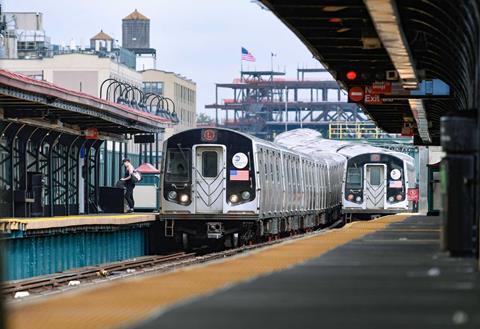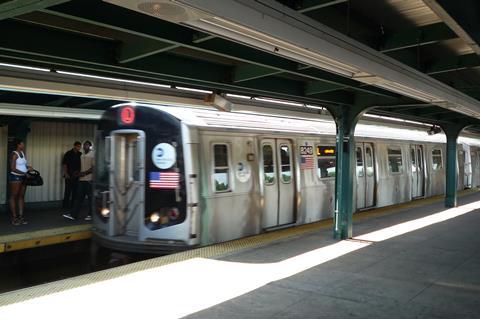USA: Further roll-out of CBTC on the New York Subway and renewal of the rolling stock fleet are core rail elements of New York MTA’s next Capital Plan, covering the transport authority’s investment priorities for 2025-29.

USA: Further roll-out of CBTC on the New York Subway and renewal of the rolling stock fleet are at the heart of the rail elements of New York MTA’s next Capital Plan, covering the transport authority’s investment priorities for 2025-29.
The MTA board approved the proposed Capital Plan in September, since when a political debate has begun over how the $68·4bn package could be funded, especially in light of a significant financial shortfall that is likely to be carried over from the current 2020-24 plan.
Post-pandemic funding challenge
This gap was in part caused by New York State Governor Kathy Hochul’s decision earlier in the year to postpone a road traffic tolling plan that was to have been applied in Manhattan from June 30. A significant chunk of the revenue generated by the congestion charge — as much as $15bn over five years — had been earmarked for investment in the Subway and other public transport services managed by MTA.
Any funding gaps are in effect carried over from one five-year plan to the next. The investment outlook is also clouded by day-to-day performance; data issued by MTA on October 21 suggested ridership in Q3 this year had bounced back to approximately 75% of the ridership seen in equivalent weeks in 2019, before the pandemic.
Since New York reopened post-Covid, there have been concerns about security and cleanliness on the Subway network in particular, leading the city and state authorities to deploy more police and National Guard personnel at stations and on trains in recent months.
Spending priorities

In the latest Capital Plan, MTA is focusing primarily on ‘state of good repair’ works to renovate existing assets following an extensive survey of the state of its various rail and bus operations over the past two years.
The plan calls for procurement of rolling stock worth $10·9bn. This covers a further 1 500 metro cars to accelerate the Subway’s rolling stock renewal, alongside purchase of 500 commuter rail cars for the Long Island Rail Road and Metro-North networks.
As part of a signalling spend totalling $5·4bn, CBTC would be installed on at least a further 120 route-km of the Subway network. The next phase of the roll-out would focus on specific sections of the metro to address key corridors and junctions. These include the Broadway Line corridor from Astoria-Ditmars Blvd to DeKalb Avenue used by N, Q, R and W trains; a section of the Nassau Line (J/Z trains) between Delancey St-Essex St and Broad St; and the Rockaways section of the A and Euclid Av to Ozone Park-Lefferts Blvd.
MTA is also seeking to fund renewal of the Subway’s oldest CBTC equipment, installed along the length of the standalone L/Canarsie Line in stages from 2003.
Elsewhere, MTA pledges to renovate and enhance various depots and yards; rebuild and repair 80 substations; and undertake modernisation of key rail assets such as the Grand Central Artery — the tunnel and covered deck through which MTA’s Metro-North commuter rail trains reach Grand Central Terminal.
Interborough Express

In terms of network expansion, the focus is on starting work on the proposed Interborough Express. This light rail route is to be developed along the alignment of an existing freight railway to connect parts of Brooklyn and Queens that are currently poorly served by rail-based transport options.
The proposed line would cover a 22·5 km route from Brooklyn Army Terminal in Sunset Park to Roosevelt Avenue in Jackson Heights using the right-of-way of the existing Bay Ridge railway, which would remain in use. The Capital Plan envisages spending of $2·75bn to complete design for the corridor and launch civil works.
Writing in the foreword of the plan, MTA Chairman Janno Lieber said that ‘for more than two years, MTA staff have been diligently documenting the condition of our 6 million infrastructure assets and prioritising the system’s needs. This Capital Plan is the result of that work — a strategic package of investments that are the most critical to address in the next five years.’
Supporting documents
Click link to download and view these filesNew York MTA Capital Plan for 2025-29.
PDF, Size 12.91 mb



